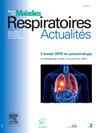Tumeurs thymiques : prise en charge chirurgicale
Q4 Medicine
引用次数: 0
Abstract
Thymic epithelial tumors (TETs) belong to rare orphan disease, nevertheless, they represent the most frequent anterior mediastinum tumors. Two distinguables entities are identified by the WHO classification: (1) thymomas, respecting the normal architecture of the gland and composed by tumoral epithelial cells associated with normal lymphocytes and (2) thymic carcinomas. TETS are frequently associated, in 30%, with paraneoplastic syndrome's, including in most of cases myasthenia gravis with anti acetylcholin receptor antibodies (RACH).The Masaoka-Koga classification, ITMIG modified in 2012 governs the principles of treatment. A multidisciplinary approach including thoracic oncologist, radiotherapist and thoracic surgeons is the standard of care and complex cases must be discussed in the French national network (RYTHMIC, thymic tumors and cancers, INCa labialized in 2012) within expert centers. The evident principle of care includes: a close evaluation of resectability, when feasible a surgical resection R0 (corner stone of a multimodal standard of care) non/or associated with neoadjuvant or adjuvant chemotherapies (CAP and carbo-taxol based) and radiotherapy.
胸腺肿瘤的手术治疗
胸腺上皮肿瘤(TETs)属于罕见的孤儿病,但却是最常见的前纵隔肿瘤。世界卫生组织的分类确定了两种可区分的实体:(1)胸腺瘤,尊重腺体的正常结构,由与正常淋巴细胞相关的肿瘤上皮细胞组成;(2)胸腺癌。30%的TETS常与副肿瘤综合征相关,包括大多数伴有抗乙酰胆碱受体抗体(RACH)的重症肌无力。2012年ITMIG修订的Masaoka-Koga分类规范了治疗原则。包括胸部肿瘤学家、放射治疗师和胸外科医生在内的多学科方法是标准的治疗方法,复杂的病例必须在法国国家网络(RYTHMIC,胸腺肿瘤和癌症,2012年INCa labalized)的专家中心进行讨论。明显的治疗原则包括:密切评估可切除性,在可行的情况下进行手术切除R0(多模式治疗标准的基石),非/或与新辅助或辅助化疗(CAP和基于碳紫杉醇的化疗)和放疗相关。
本文章由计算机程序翻译,如有差异,请以英文原文为准。
求助全文
约1分钟内获得全文
求助全文
来源期刊

Revue des Maladies Respiratoires Actualites
Medicine-Pulmonary and Respiratory Medicine
CiteScore
0.10
自引率
0.00%
发文量
671
 求助内容:
求助内容: 应助结果提醒方式:
应助结果提醒方式:


